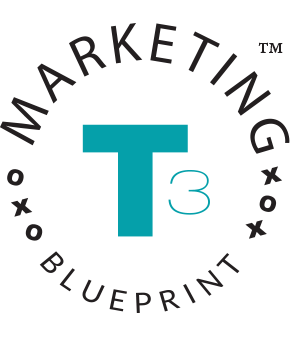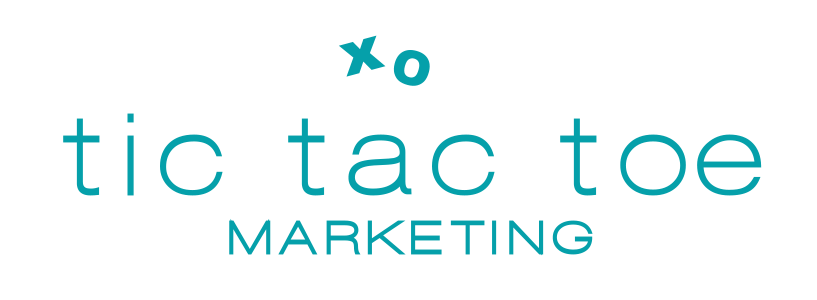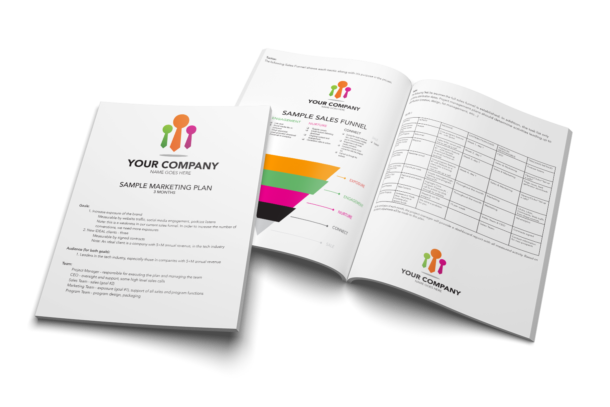Most often, when people think of marketing, they think of the tactics we use to execute marketing. They think of the website and advertising and print promotions created to communicate. You have seen the illustrations of an iceberg. Only a small portion is above the water and visible. The fact is that marketing tactics are the above water part of the iceberg. All of the work that gets you there is the massive chunk of ice below the water that supports the tactics.

Points of Contact
Every day, Americans are exposed to thousands of marketing messages. We have become so accustomed to recognizing them and immediately knowing what is for us and what is irrelevant, that our human brains manage this onslaught of information subconsciously. We make quick decisions on the quality of products based on their marketing. We even go so far as to buy into and become raging fans of products that we have barely used – because of their marketing.
Remember that nonprofit church camp I mentioned in Chapter 1? During my time as the marketing director there, we created a new program called “Parent Communications.” What we understood was that when a parent leaves their child in the care of others for a full week, it can be stressful and anxiety-filled for that parent. If that anxiousness prevents them from loving this experience for their child, they are not likely to send their child a second time or refer the camp to others. This “Parent Communications” program sought to eliminate some of their worry by hiring interns to communicate with the parents back home. With more than 200 campers on site each week, it was hard work, but the interns committed to photographing and sending a personal email to every parent/guardian of elementary-aged campers. Parents would get an email that might say, “Hi Amy, I just wanted to touch base and let you know that Tyler is having a great week and doing really well. I sat with him and his new friend Blake at lunch. They got to do the climbing wall yesterday and LOVED it. Tyler says he made it most of the way to the top. He was pretty proud of himself. I’m attaching a pic I snapped. I hope you are having a great week at home. Thanks for sending Tyler. He’s such a fun kiddo.”
The response was overwhelming. Parents LOVED this simple communication. Before we started doing this, the leadership team worried that giving parents too much easy access to staff would mean these interns would be chasing updates on kids all week from helicopter parents who are never satisfied. The opposite was true. This simple communication gave parents information that assured them their child wasn’t sunburnt, eaten by bugs or in a corner crying alone. The feedback told us that having a personal email address of an actual person on staff was enough to reassure parents that if they needed information or wanted an update, they could get it. Rarely was this abused and it created passionate parents who were happy to send their kids back again the next summer. In one case, a parent, who had not communicated with their child during the week and had only received one email from a parent communicator, posted on Facebook, “My child is having the best week of his summer. Check out this photo I got.” Wow – you can’t pay for that kind of advertising.
You want this level of raging fans for your business, and that means you need to get the word out about how great you are! And, sadly, for it to register in your potential customer’s mind, hearing about you once isn’t enough.
As mentioned before, studies vary, but most agree that it takes 7-15 points of contact for a person to engage with a brand. That doesn’t mean that if you flash a brand logo in front of your constituents face every day for two weeks, they will buy your product. It means that your brand (your visual brand, your messaging, your quality of delivery), need to reach your audience where they are and offer them something they need 7-15 times before they will inquire further and, hopefully, purchase. With this level of requirement, it’s no wonder the marketing industry is so massive and there are so many voices telling you the right way to do things. The problem is that we can’t afford to go without marketing and we certainly can’t afford to have bad marketing.
But, Casey, you say – the Volkswagen Beetle wasn’t marketed when it first came out. It was simply a well-loved and high-quality product from the start and word-of-mouth took over. Yes, Linda, that’s true. Are you selling the Beetle? Have you been struck by lightning? Have you won the lottery? If the answers to any of these questions are true, you are clearly luckier than 99.9% of the population – by all means, give it a try and see if it works!
Zappos is an online store that sells, primarily, shoes. They have created a near-cult-following because of their marketing. The products they sell are easily purchased at many, many other retail stores – physical and online. And, they aren’t the cheapest. But a quick look at #zappos on Twitter will show you that people are talking about this company every single day. They have created a truly raging fan base. My family buys most of our shoes from Zappos. It has gotten to be a game. How late on day one can we order our shoes and still have them arrive the next day? I swear they have some sort of Harry Potter owl delivery service. It’s not reasonable how quickly they can get you shoes.

You can create this level of support for your brand without having the resources of Zappos. The T3 Marketing Blueprint is going to help you accomplish this. I’m going to tell you now the things you need to do to up your chances of getting it right. When you create your T3 Marketing Blueprint, there are several things you need to define with every tactic.
For every goal you have set, it is necessary to define the tactics that it will take to make the sale.
It can be helpful, when you input this into your digital file, if you create separate tables for each month. Pro-tip for the Project Manager – One week before the start of each new month, create a simple communication for the team with a report of the coming month’s activities.
Customer Experience
It is important to create your tactics from the customer’s perspective. Choosing your tools and messages should be based on your customer’s needs, not your company’s. It may be easiest to purchase an email list and send three promotional emails than to do the research to find out where they live, work, shop and go to church, but it won’t be as effective.
Need a reminder of understanding your audience? Go back to Chapter 4!
Audience
You have already defined your target audiences in the T1 section. At this point, you simply need to name the audience that the activity is intended for. It’s fine if it is for more than one audience, but the more you can make sure the messaging is defined and targeted, the better. If the messages are different for the audiences, but the activities are the same, create two post-it notes. If the messages are the same, just layer the post-its so you can see both colors later as you enter it into the T3 template.
In the end, when you look at your full wall of post-its, you should be able to see 7-15 points of contact for each audience. More is better, less is not. If you can’t find 7-15 ways to be in front of an audience, you either need to eliminate that target audience, or do some more research and find out where they are, what they read, how they receive information and use that to create new activities. Go back to your audience personas for ideas.
Activity
Name the activity. This is the space for you to define what it is that you are doing. Are you placing an ad on social media? Are you creating a website or a video? Are you sending an email blast? Are you making personal visits? All of these things are good ideas IF they reach the intended audience.
Word of caution – don’t use the same avenue to reach an audience every single time. Just because you have an email address, doesn’t mean you should send a monthly email and call it good. Diversify the ways you reach folks. The more they see you in a variety of places, the more likely you are to catch their attention.
Message
Here’s the problem. We know from the research done by marketing gurus like Don Miller that “people don’t always buy the best product, they buy the ones that communicate the clearest.” I. CAN. NOT. EMPHASIZE. ENOUGH. THE. IMPORTANCE. OF. GOOD. MESSAGING.
This whole area is really another workshop/planning day. As the facilitator/leader, this is an area that you need to devote time to outside of this activity. I highly recommend Building a StoryBrand by Donald Miller.
StoryBrand teaches that there are seven basic buckets that you need to communicate in your brand message:
1. Who is your product for and why do they need it?
2. What problem does your product solve for them?
3. Why is your product the best ?
4. How can they buy it?
5. Call to Action?
6. What will their lives look like if they buy your product – picture of success?
7. What is at stake if they don’t buy your product – picture of failure?
In most of your communication, you will only pull from one to three of these buckets. NOTE: the full story rarely shows up all together – unless on a website, in an annual report or video with that distinct purpose.
The space devoted to messaging in this guide doesn’t do justice to the importance it has in your marketing. Please, in the name of all things holy, invest time in this area and do it well.
Tips from StoryBrand
– Clear is always better than clever
– Keep it simple
– Test your messages on random people. If they don’t understand what you can do for them, rework your message. You aren’t there yet.
Seth Godin says, “The marketer’s job, then, is to tell a true story, one that resonates, one that matters to people, and to repeat it often enough that it creates value.”




